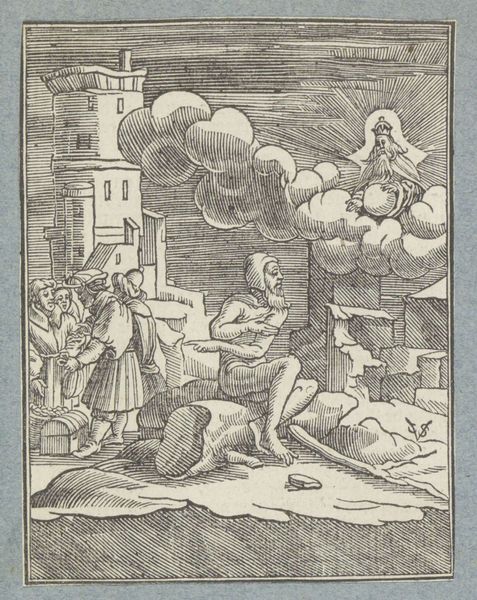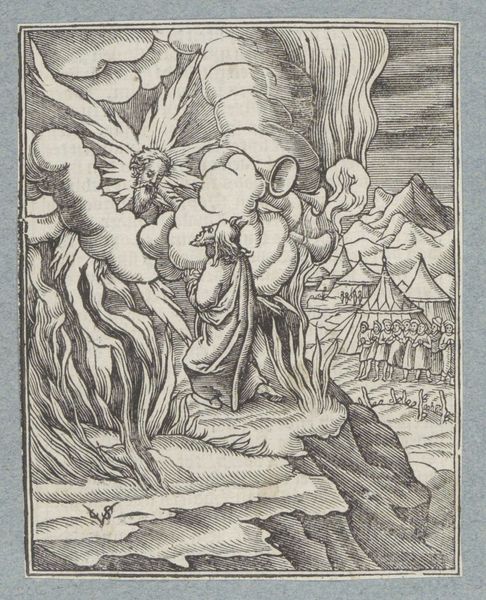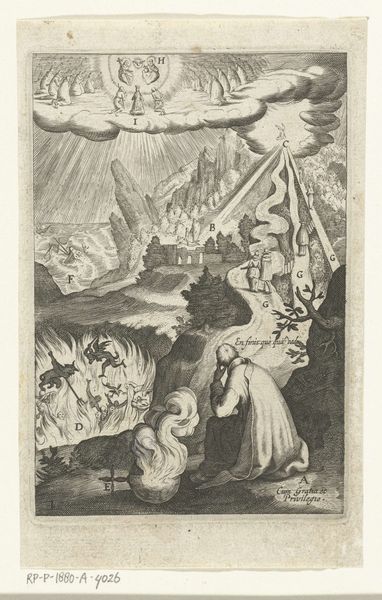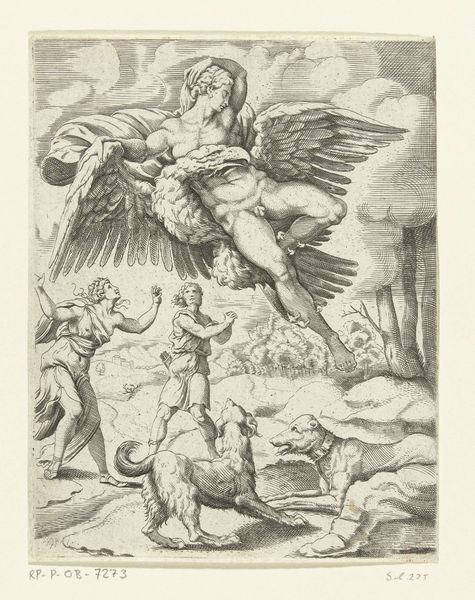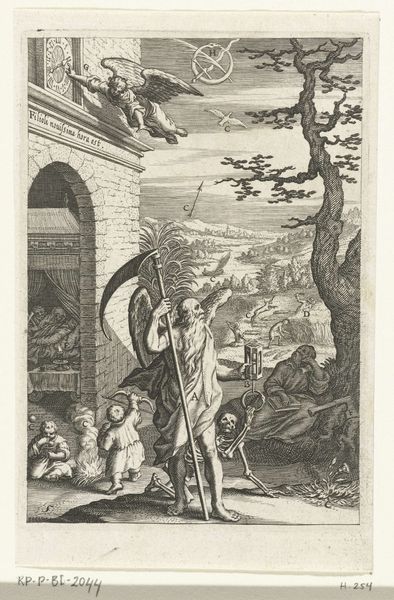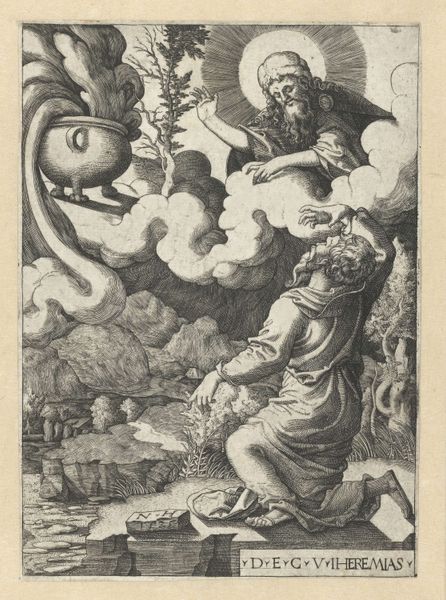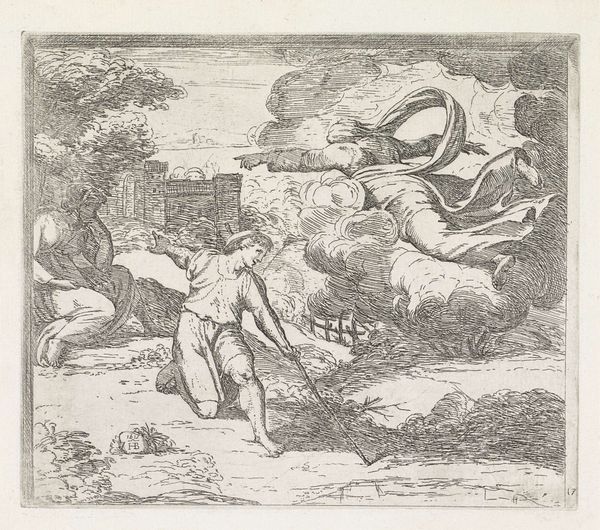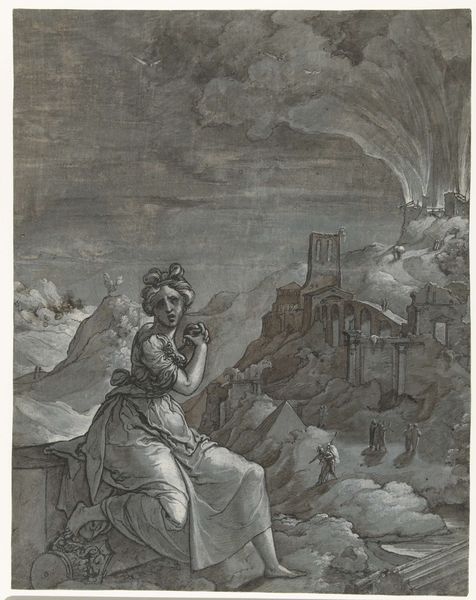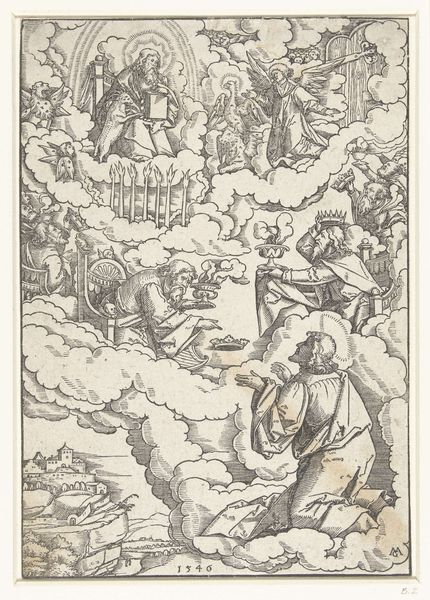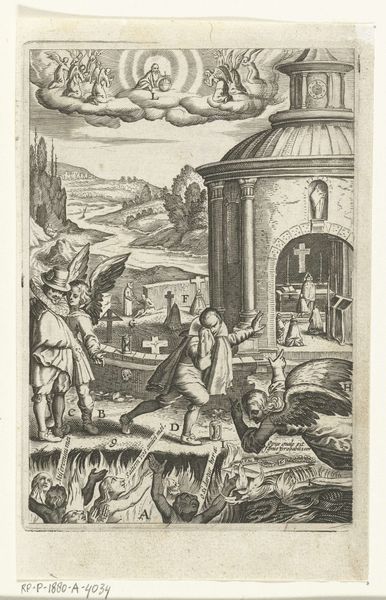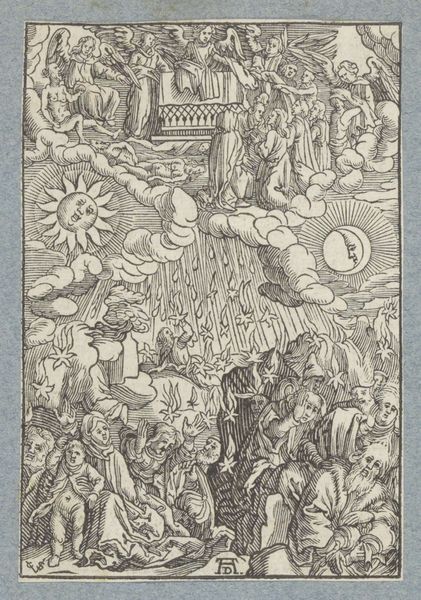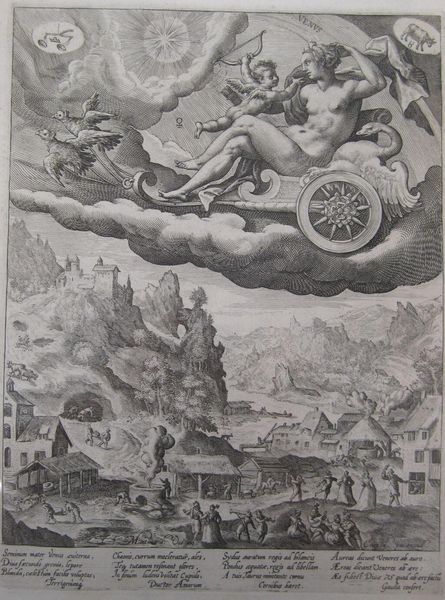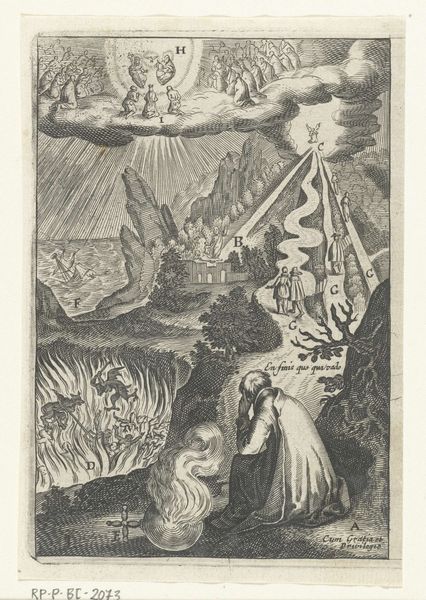
print, ink, engraving
#
allegory
# print
#
landscape
#
mannerism
#
figuration
#
ink
#
history-painting
#
engraving
Dimensions: height 100 mm, width 70 mm
Copyright: Rijks Museum: Open Domain
Curator: The eye is drawn upwards immediately in this print. I’m thinking specifically about how Bos deploys line weight and compositional balance. Editor: It feels very light and unsettling, that little boy casually riding an eagle through fluffy clouds as though it’s perfectly normal. This must be Ganymede? Curator: Precisely. This engraving, attributed to Cornelis Bos and dating to sometime between 1537 and 1555, is titled "Roof van Ganymedes". Its allegorical layers, combined with its formal choices, invite deeper engagement. Notice the strategic deployment of contrasting densities. Editor: What exactly do you mean by 'densities'? Are you referring to the areas of heavy lines against the light or is it a symbolic term? Curator: A little bit of both, actually. In this work we observe Bos' skillful use of cross-hatching that suggests depth but equally suggests a kind of heavy inevitability. Observe Ganymedes seemingly weightless astride Zeus’s eagle. Juxtapose this image against the architectural ground and a tension immediately manifests itself. Editor: So that's Zeus, transformed, of course. The whole thing seems so strange, like a half-remembered dream where the logic is slightly off. Ganymede looks so unconcerned. He's like a doll perched precariously. It raises uncomfortable questions about vulnerability and power. What exactly is in the cultural memory that Bos expects the viewer to recognise? Curator: Excellent observation! Ganymede’s abduction served in the Renaissance as a potent symbol for male love and even the soul’s ascent to the divine. Bos' composition underscores this ascent. It is about aspiration but simultaneously it explores classical artistic expression. Note the rendering of architectural forms as an intersection of geometry and humanistic concern. Editor: And it’s fascinating how these themes coexist in the print—aspiration with brutality, humanism with the cold precision of geometrical forms. This ink engraving is like a visual puzzle that exposes contradictory views. Curator: Yes, I feel we come closer to appreciating the subtle dance of formal precision with symbolic suggestion, especially knowing that such prints served important, almost devotional purposes. Editor: The intersection of graphic tension and ancient theme makes a truly thought-provoking statement.
Comments
No comments
Be the first to comment and join the conversation on the ultimate creative platform.
